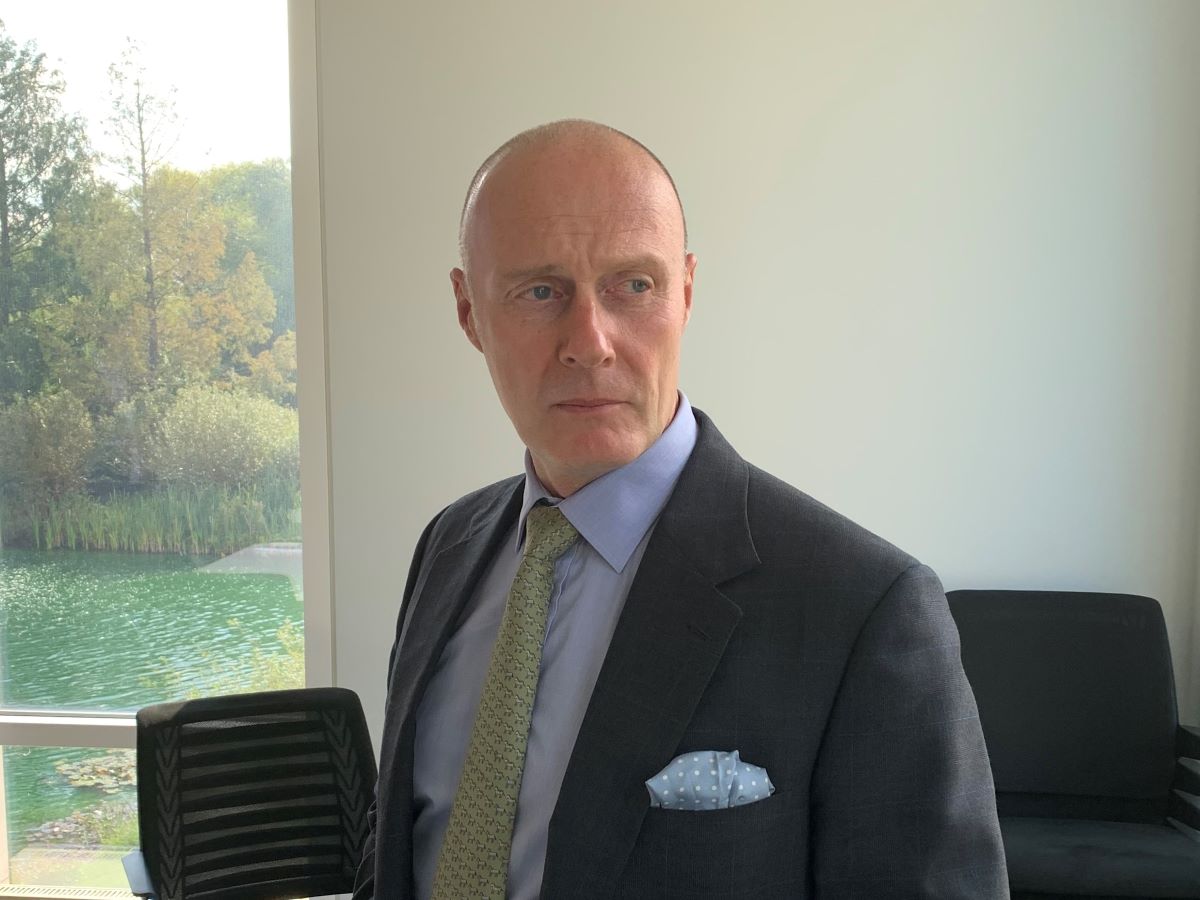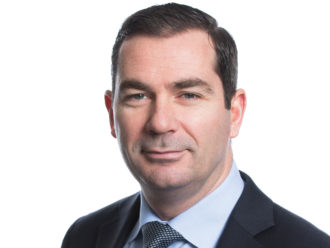David Stewart, chief investment officer at British Airways Pensions about taking the reins weeks before the lockdown, being hard-wired for optimism and why now is not the time for tactical calls.
You became chief investment officer (CIO) at British Airways Pensions a month before the lockdown, so how have the first six months in the job been for you?
It’s been interesting. I joined in mid-February and by the end of the month we were doing the first trial runs of working from home because it became obvious that we were about to enter that scenario. I officially became CIO at the start of March and almost my first action was to send everybody home – at least I had the chance to be in the same office with them for a few weeks.
It occurred to me recently that if you shorted the market every time I moved jobs you would have quite a good performance record by now. I joined the Abu Dhabi Investment Authority just before the Asian debt crisis, launched my first fund weeks before 9/11 and now this. My job moves tend to be a performance indicator of some sort.
How have you settled in with the team during the lockdown?
Reasonably well. Our deputy CIO, John St. Hill, joined from Nest during the lockdown and has not had a working day in the office yet. Thanks to video conferencing we know what he looks like, but we don’t know if he is five-foot-two or six-foot-two. We’ll find out in a more normal environment, I guess.
Could you tell me about British Airways’ two pension schemes?
The Airways Pension Scheme (APS) is the older of the two. It had a £7.9bn portfolio in March 2019, is pretty mature and around 99% funded. Its interest and inflation hedges are in the high 90s as well. As you would expect, it’s mainly gilts and credit with private equity and real assets pretty much in run-off.
The New Airways Pension Scheme (NAPS) is less mature, it is about £18.1bn, 85% funded (March 2019) and the hedge ratios are much lower. The scheme has a more conventional asset allocation of about a third equities, 8% property and 4% alternatives.
NAPS closed to new members in 2018 and you have since reduced your equity exposure.
The NAPS scheme is working to a long-term journey plan. There are time-based and market-based de-risking triggers and we are progressively re-allocating from growth assets into matching assets over time.
Is that generally into fixed income or are you considering alternative assets?
It is generally fixed income. One of the more interesting things we are doing is the diversified illiquid income portfolio. We are leveraging internal competences to source assets in that portfolio, particularly through our property team, acting opportunistically within fixed income markets. That is part of our matching strategy. The ability to use assets like that within our matching strategy is going to be a key part of the strategy going forward as the schemes mature.
It is not just the asset allocation, it’s the investment philosophy where your mindset switches from traditional growth assets towards matching assets. That is one of John’s key tasks. He is there to help us with that cultural shift from growth to matching assets.
APS is different. It does not have an allocation to equities but has a relatively high exposure to real assets, why is that?
The real assets, private equity and other alternatives, are all in run-off. It looks high because the buy-in we did two years ago took a chunk of the fixed income out, so it looked like we increased the allocation to alternatives when in fact it is a result of the buy-in.
How have APS and NAPS been affected by the market volatility we have seen this year?
Were they affected? Definitely. Were they affected badly? No.
As a widely diversified long-term investor, we buy things pretty much on a buy-and-hold basis. Our quality bias across equities and credit, combined with the allocation into private markets kept things relatively stable. The bounce-back was so quick that it did not do a huge deal anyway.
We were concerned about the property and credit portfolio given what happened in the wider market but our experience with those asset classes has been resilient. Our property and credit teams have done a good job in building genuinely resilient portfolios.
But for property, the long-term impact of the crisis may yet to be seen.
It is but if you look at the sectors where there has been capital impairment and impairment in rental collection that is already showing. That has been quite a significant feature across the market and we have been resilient on both those metrics.
Is that due to the sectors you are invested in? Some sectors, like warehousing and logistics, seem to be benefiting.
There has been a benefit from sector allocation. Our team decided several years ago to not be in shopping centers. They have a distinctive strategy which has generated outstanding returns over multiple decades.
As a scheme with a significant allocation to fixed income, are you concerned about inflation or are you confident that your liability matching strategy should offset such risks?
God knows. People who know a lot more about it than me have been forecasting increased inflation for many, many years and we haven’t seen it. Will it come back at some point? Of course, but it is unclear what will cause it to come back now that wouldn’t have five or 10 years ago. That is a huge open question.
At this point it is also hard to tell which way pricing levels could go.
It could be both. It will be both. It becomes increasingly clear that the environment we are in now isn’t too different from before the crisis.
Last year seems like a completely different time, but since the global financial crisis there have been worries about distortions of capital markets and where sustainable economic growth would come from. Those structural issues have accentuated over the past few months and will have repercussions in the years to come. But it hasn’t changed the direction of anything.
That is one of my more fundamental concerns as a long-term investor. Growth to an economy is what education is to society. It is the silver bullet, the panacea. With it, everything becomes possible. Without it, everything becomes just that little bit more difficult and some things become absolutely impossible. That hasn’t changed. All the huge rescue efforts that have been put in place – thankfully within days and weeks, rather than months and years as we saw during the global financial crisis – have been great. But that is about survival, not a leg up on growth potential for the global economy.
As far as the disruption in financial markets that we have seen for the past 10 years, if negative interest rates, huge government borrowing and state-financed raking of financial markets was the route to an economic nirvana, it would have probably been discovered some time ago.
It is much more likely that we are simply putting in place a whole new bunch of distortions and misallocations. What has been done in the past few months has simply amped up those dynamics. Things have not become any clearer or easier for long-term investors.
With that in mind, is it likely we will see the growth a modern capitalist economy needs? We are talking about cumulative levels of growth, so 10% 100 years ago looks different to 10% today. Is that sustainable?
There will be new sources of growth, there is no question about that. My background is as an equity PM. I am not one of these bond guys who is manically depressed, I am hard-wired for optimism. It’s always wrong to bet against human ingenuity and ambition. Where there is human ingenuity and ambition there will be growth. Whether that is in the green economy, medicine or technology.
As an active investor that concerns us more than the headline level of a particular index. We focus on areas of growth rather than the wider economy, but government policy is driven by social issues and the wider economy, so we have to be cognisant of that.
So, the challenge for you as a long-term investor is to identify the areas that will benefit from the changes we are seeing?
Yes, and the challenge is that in a low-growth, low-investment return world, accessing high-growth areas is not going to be cheap. That’s perhaps one of the key challenges investors face.
Equity markets certainly seem quite pricey at the moment.
I don’t remember a time when they did not seem pricey and people felt good about it. They only seem cheap when people are feeling terribly depressed about their prospects.
With that in mind, are you planning any changes to your asset allocation?
The changes that we make to our asset allocation are more in line with the journey plan than any short-term views on capital markets. It’s not directly answering your question, but we have cut back quite significantly on our tactical asset allocation this year.
We took the view that in an environment characterised by uncertainty rather than risk, there isn’t much value that we, or anyone else, could add reliably and consistently through short-term tactical asset allocation.
But the long-term journey plan and de-risking triggers don’t change. That’s the path we are on. This is not an environment where I would want to stray too far from our strategic asset allocation. If you don’t have confidence in the ability of tactical asset allocation to consistently add value, then stick to your strategic asset allocation.
For equity investors, might strategic trends emerge?
I am a firm believer in bottom-up views, rather than to impose top-down thematic views. You have a much more resilient, stable investment base to work on when the portfolio is based on hundreds of little decisions rather than posing four or five big macro calls.
Particularly for long-term investors, it makes much more sense to make a larger number of stock-specific decisions and allow your portfolio to gravitate towards those growth areas than applying a thematic approach.
Let’s talk about responsible investment. A third of NAPS’ portfolio is invested in equities and you pride yourself in being an active shareholder. Can you give me some examples of recent engagements?
Over the past two quarters a lot of our engagement has been driven by Covid-19. The portfolio managers have been spending a lot of time with investee companies to make sure we understand how they are being impacted and how they are dealing with their employees, customers and suppliers to keep a clear view on how they are reacting.
Outside of that we have worked with several mining and energy companies to ensure that the industry associations they are aligned with are in turn aligned with those companies stated climate goals.
In many cases the industry associations that mining and energy companies are funding are known for lobbying against climate action. This is not appropriate for corporates who have themselves signed up to the Paris Agreement.
We are also active in ensuring non-executive directors are right for the board they are going to join. We focus particularly on addressing the issue of over-boarding.
The activity we run is primarily executed by the portfolio managers, whether that is in equities, fixed income or alternatives. Our stewardship and engagement activities are then tracked and pulled together by the responsible investment team.
How do you implement ESG investing in fixed income as well as alternatives, such as real assets and property?
For corporate bonds we monitor risk exposure at the security and portfolio levels, the same way as we do for equities. Again, the portfolio managers lead the activity on stewardship and engagement with the responsible investment team working alongside them. Where we use third-party managers in alternatives, for example, the focus is on understanding their ESG policies and processes and how they address specific issues that may arise.
We have already talked about the broader structural challenges for the economy. What do you think are currently the biggest risks for investors?
The key risks have not changed. We have a risk-free rate which is effectively negative. The risk-free rate has dropped much more than the likelihood of risks appearing. To that extent risks are being systematically underestimated.
I remain concerned that many financial assets are being influenced by huge short-term liquidity flows and that the information content contained within asset prices is therefore a lot less than it was. People who are a lot cleverer than I am spend a lot of time trying to work out what the implied risks are in asset class pricing. The point is that asset prices now are telling us a lot less about future prospects than they are telling us about these huge liquidity flows that are hitting us. That distorting effect is still very much to the fore of my mind.
We need to be able to turn down the volume on what financial markets are supposedly telling us and take a view on the long-term prospects of individual companies.
One last question. What will the global economy look like in a years’ time?
David Lloyd George once said that the most dangerous thing in the world is to try and leap a chasm in two jumps. That one-year horizon falls right in the middle of the chasm.
We know what tomorrow is going to look like. We can probably assume what 10 years’ time is going to look like. One years’ time? Who knows? Will there be second and third waves? Almost certainly. Will there be any more national lockdowns? Personally, I suspect there will not be anymore.
Will there be more government assistance across developed economies? Almost inevitably. What that gives us on a one-year time frame? I have no idea. But as a long-term investor, I am not too worried about that and I certainly would not make asset allocation decisions in that kind of time frame.
So, I don’t know. The more accurate answer is, I don’t think it is relevant for us within this fund.




